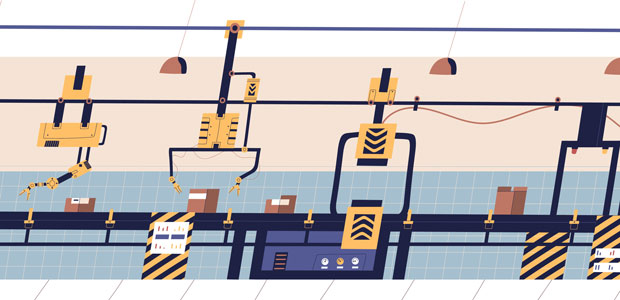
9 startups ready to change metal additive manufacturing
The metal additive manufacturing market will be negatively impacted by the 2020 pandemic. Despite this short-to-mid-term setback, the industry is forecast to rise and exceed $10bn within the next ten years. The emerging and established printer players grab nearly all of the headlines, but most of this forecast annual revenue will be in material sales in which there is great untapped potential.
In the latest market report from IDTechEx, 'Metal Additive Manufacturing 2020-2030', the industry forecast to shrink and then rise to over $10bn with most of that annual revenue in material sales.
This technical market report includes granular forecasts and over 50 company profiles from promising startups through to market leaders, material players, and more. This was completed with an extensive number of primary interviews to bring the reader the latest and most accurate information.
The materials portfolio for AM processes was predominantly based on the modification of existing materials and supply chains. Metal powders are the most common form of feedstock used with titanium, steels, aluminium, nickel-based, cobalt-based, copper, precious metals, and more all employed. Titanium is the most significant and there is significant movement in this industry, with expansions (such as Sandvik, Oerlikon, and Tekna), vertical integration within key verticals (such as GE Additive and Carpenter), and joint ventures (such as GKN with TLS Technik).
There is also extensive interest from existing metal powder players who see this sector as both an opportunity and a threat. However, atomisation processes are not facile, particularly for the likes of titanium, and as often low yielding the economics behind it can be challenging which keeps appropriate material expensive. Not to mention that the purity, size distribution, and shape all need important considerations. There is a key trend in using other metal feedstocks, with wire being the most notable; this will be discussed in a subsequent article.
Common criticisms of the metal portfolio for additive manufacturing is that they are expensive, typically modified from existing materials, and do not leverage the full potential of the processes. The current players have been rapidly changing that but there is also the potential for disruption.
This article will highlight nine startups that are looking to make an impact in this sector. They are at various degrees of technology readiness and have differing approaches. Despite the long term market potential, success is anything but guaranteed, you only must look at the turbulence of Metalysis (not included on the list as a result) to see that. There are ubiquitous challenges in the timing, offering, and business model to be competitive and well-positioned to achieve a share of this market.
New Processes
There are new approaches in powder production. 6K (previously Amastan Technology) use a microwave plasma system with a very high yield for Inconel and titanium alloy production, and Equispheres use a novel approach to generate highly spherical powders with a narrow particle size distribution.
Both these companies have raised considerable funding over recent years as they begin to ramp up towards notable commercial production. Uniformity Labs has developed an approach to make denser particles, and like with Equispheres’ highly spherical consistent powders, this can allow for much higher throughputs in the printer process.
Recycled Feedstocks
A major driver in aerospace for additively manufacturing titanium parts is to reduce the buy-to-fly ratio. This is for the cost of the virgin material and the handling and re-use of the scrap. One target is to turn scrap titanium into usable AM powder and up-cycled titanium parts.
Tekna and 6K, previously mentioned, are both progressing this field, with 6K acquiring AL Solutions for this. Another startup active here is MolyWorks with exciting work in their development of a mobile foundry.
Aluminum, Steels, Copper, and MMCs
As discussed, titanium is one of the most notable material feedstocks for additive manufacturing, but engineers would like a wider range particularly with lower cost aluminium and steel alloys that they have a large background in. Equispheres, mentioned earlier, are initially targeting aluminum alloys seeing this gap in the market.
Elementum 3D has a proprietary Reactive Additive Manufacturing (RAM) process whereby in-situ reaction products overcome traditional challenges with grain structures and more. Elementum 3D has received funding and are scaling their portfolio which include 6000 and 7000 series aluminum as well as metal matrix composite (MMC) offerings. MMCs have been known for a long time but have only extended to specific niche roles, AM could expand this and early-stage MMC players, the likes of Gamma Alloys, are starting to focus on this option.
When we look at low cost mid to high volume products, steel is the dominant material; steel is already offered for most processes and a front runner in bound metal and metal binder jetting processes showing the significance.
Formetrix spun-out from NanoSteel in 2018 and are targeting their proprietary tool steels for AM processes. Finally, copper is material that could take this technology in innumerable directions. There are multiple challenges but with an increasing number of emerging offerings, it is just a matter of time before this takes off.
Materials Informatics
Materials Informatics is the data-centric approach for materials science R&D, enabled by improved data infrastructures and machine learning approaches. IDTechEx has a detailed report on the topic: 'Materials Informatics 2020-2030'.
One target market are additive manufacturing alloys, QuesTek Innovations, Intellegens, Exponential Technologies, and Citrine Informatics have all been active in this field, with the latter working with HRL Laboratories to produce an AM aluminum alloy registered by the Aluminium Association.
As well as offering platforms and research projects many also use these advanced R&D approaches to build IP portfolios. OxMet Technologies carry this out for multiple alloys, particularly high-temperature nickel-superalloys, and Phaseshift Technologies target amorphous alloys using the fast cooling rate of the printing process.
Exotic Materials
As mentioned at the end of the last section, amorphous alloys and MMCs are gaining prominence with additive manufacturing in a way that was previously not possible. Heraeus are at the forefront of work with amorphous alloys in AM making a wide variety of demonstration parts.
This progression to beyond conventional alloys is of significant potential to the additive manufacturing industry and is best highlighted in High Entropy Alloys (HEAs); HEAs have been an R&D interest for a long period but AM could hold the key to unlocking their potential. QuesTek Innovations and Metalysis have both been active in this field, but of note was 6K work in claiming to print the world’s first part at the end of 2019.
This article shows the range of activity taking place in the materials portfolio for metal additive manufacturing. For detailed profiles on many of the companies mentioned in this article and many more, please see the IDTechEx report 'Metal Additive Manufacturing 2020-2030'. This report gives targeted analysis into this industry, providing the latest forecasts with key technical insights.


